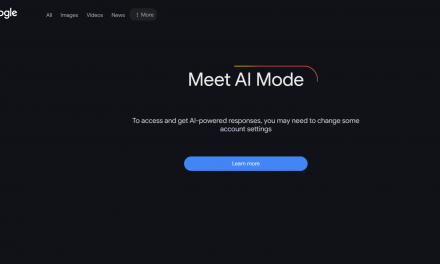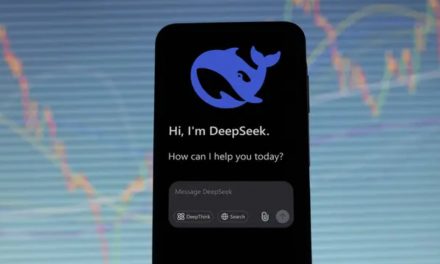When Dario Amodei, CEO of Anthropic, stood before the Council of Foreign Relations earlier this week and declared that artificial intelligence could be writing “essentially all of the code” within 12 months, the tech world experienced a collective shiver of anticipation—and unease. As someone who has tracked the evolution of AI from its academic roots to its current status as a catalytic force in global industries, I recognize this moment as more than mere hyperbole. It’s a seismic warning shot across the bow of software development, signaling a transformation so rapid that even seasoned technologists are scrambling to grasp its implications.
Amodei’s timeline—90% of code written by AI within 3-6 months, and near-total automation within a year—isn’t just a prediction. It’s a challenge to the fundamental identity of software engineering as a human-centric discipline. To understand why this claim carries weight, we must dissect the technical undercurrents, market forces, and ethical dilemmas converging to make this possible—and explore whether the industry is prepared for what comes next.
From Assistive Tools to Autonomous Coders
The concept of AI-generated code isn’t novel. For decades, tools like auto-complete features and snippet generators have nibbled at the edges of developer workflows. But the leap from those rudimentary aids to today’s large language models (LLMs) like Anthropic’s Claude or OpenAI’s GPT-4 is akin to comparing a pocket calculator to a quantum computer. Modern AI coding assistants don’t just suggest lines of code; they architect entire systems, debug complex functions, and iterate in real time based on natural language prompts.
What makes Amodei’s prediction plausible is the accelerating pace of refinement in these models. “We’ve moved from systems that could handle 10% of boilerplate code to ones that can generate full-stack applications in weeks,” explains Dr. Elena Torres, a machine learning researcher at Stanford who has studied AI code generation. “The bottleneck now isn’t technical—it’s psychological. We’re struggling to trust what the models produce, even when they outperform humans.”
How AI Coding Really Works
To appreciate the scale of this shift, let’s deconstruct the mechanics. Today’s AI coding tools operate through a combination of transformer architectures and reinforcement learning from human feedback (RLHF). They’re trained on vast repositories of open-source code—GitHub alone hosts over 128 million public repositories—allowing them to recognize patterns across languages, frameworks, and use cases.
But the real breakthrough lies in their ability to contextualize code within broader systems. “Early models treated code as text, but newer systems map it to abstract syntax trees and dependency graphs,” says Mark Chen, lead engineer at a Silicon Valley AI startup. “They’re not just predicting the next token; they’re simulating how each function interacts with an entire codebase.”
This capability is supercharged by exponentially growing context windows. Where earlier models could process a few hundred lines of code, Claude 3 and GPT-4 Turbo handle up to 1 million tokens—enough to ingest an entire mid-sized software project and suggest coherent, architecture-aware modifications.
The Human Factor: Developers as AI Orchestrators
Amodei’s vision doesn’t render developers obsolete—at least not immediately. Instead, it reimagines their role as “AI handlers” who define system requirements, validate outputs, and manage higher-order concerns like security and ethical alignment.
“Think of it like conducting an orchestra,” suggests Priya Rao, CTO of a fintech firm that uses AI for 60% of its coding. “Our engineers don’t write SQL queries anymore. They describe the data relationships they need, audit the AI’s proposed schemas, and focus on optimizing transaction throughput.”
This transition mirrors historical shifts in other industries. Just as CAD software transformed drafting boards into digital design labs, AI coding tools are evolving from assistants to primary producers. But the velocity of this change is unprecedented. Y Combinator’s Garry Tan reports that 25% of their latest startup cohort already relies on AI for 95% of their code—a statistic that would have been science fiction just two years ago.
Security, Jobs, and the Illusion of Control
Beneath the technical marvels lurk thorny ethical questions. If AI writes most code, who bears liability for vulnerabilities? A 2023 study by the Cybersecurity and Infrastructure Security Agency found that AI-generated code had 3x more security flaws than human-written counterparts—though proponents argue this gap is narrowing rapidly.
Then there’s the jobs paradox. While Amodei and IMF’s Kristalina Georgieva warn of massive workforce displacement, demand for AI-savvy engineers is skyrocketing. “We’re seeing a bifurcation,” notes tech labor economist Dr. Ian Kessler. “Entry-level coding jobs are evaporating, but roles requiring AI supervision and domain expertise are up 300% year-over-year. It’s a brutal transition, especially for mid-career developers.”
Regulatory bodies are scrambling to respond. The EU’s proposed AI Act now includes provisions for “high-risk code generation systems,” while the U.S. National Institute of Standards and Technology (NIST) is developing auditing frameworks for AI-produced software. But legislation lags far behind technological reality.
Startups, Giants, and the New Economics of Software
The business implications are staggering. Startups leveraging AI coding report 70% faster product cycles and 90% lower initial engineering costs. “Our MVP, which would have taken six months and cost around $500k with a traditional human team, was completed in just six weeks for under $50k using Claude and GPT-4,” reveals Devin Cole, founder of an AI-driven logistics platform.
For tech giants, the stakes are existential. Amazon and Google’s multi-billion-dollar bets on Anthropic aren’t just about coding—they’re bids to control the foundational tools of all future software development. Meanwhile, open-source alternatives like Meta’s Code Llama are gaining traction, threatening to democratize access to elite coding AIs.
Investors are placing dual bets: funding AI coding startups while hedging against potential disruption. “Every dollar poured into AI-driven development tools is a dollar subtracted from traditional software services,” observes venture capitalist Alicia Nguyen. “The next Y Combinator demo day might feature startups with no human engineers at all.”
When Machines Engineer Machines
If Amodei’s timeline holds, we’re months away from a world where AI handles routine coding tasks—and perhaps years from systems that autonomously improve their own architectures. This raises existential questions about software’s role in society.
Will AI-optimized code prioritize efficiency over transparency? Could self-modifying systems escape human oversight? And crucially, how do we ensure that the values embedded in these models align with societal needs? Anthropic’s focus on “constitutional AI”—systems constrained by ethical guardrails—hints at one approach, but implementation remains fraught.
What’s undeniable is that software development is undergoing its most radical transformation since the advent of high-level programming languages. The engineers who thrive will be those who embrace their new roles as strategists, ethicists, and interpreters between human intent and machine execution. As for the rest? The clock is ticking—and it’s written in code only the AI can fully comprehend.
Code—The Ripple Effects
Amodei’s warning extends beyond software. If AI can master coding—a discipline requiring logic, creativity, and systematic problem-solving—what domain remains uniquely human? Healthcare diagnostics, legal analysis, and even scientific discovery may face similar disruptions. The challenge isn’t just technological; it’s philosophical. As we stand at this inflection point, one truth becomes clear: The machines aren’t coming for our jobs. They’re redefining what work even means.





